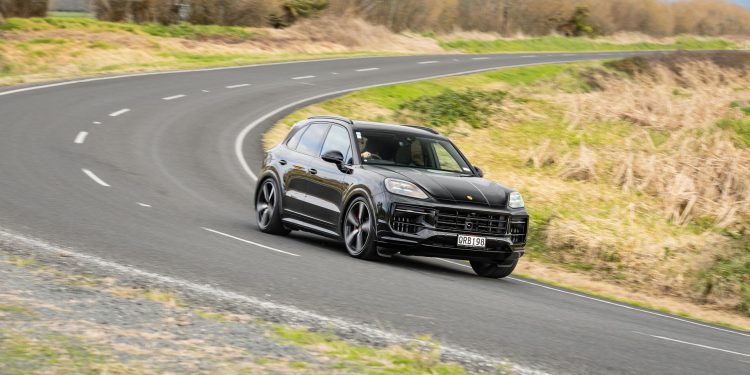2024 Porsche Cayenne GTS review
Words: Peter Louisson | Photos: Isaac Western
More power and added precision from rear axle steering make the latest Cayenne GTS something special. And what a bark!
It would be a truism in the motoring world that all GTS models from Porsche are a bit special, even those based on an SUV like this Cayenne model. The first examples of Cayenne GTS are landing about now.
Gran Turismo Sport means added dynamism and long-distance capability. Always has from Porsche, always will. Think – built for road comfort and track action.
On this particular black model you have to look closely to see the Cayenne GTS badging on the side of the vehicle but it is there, providing there’s not too much road grime masking it.
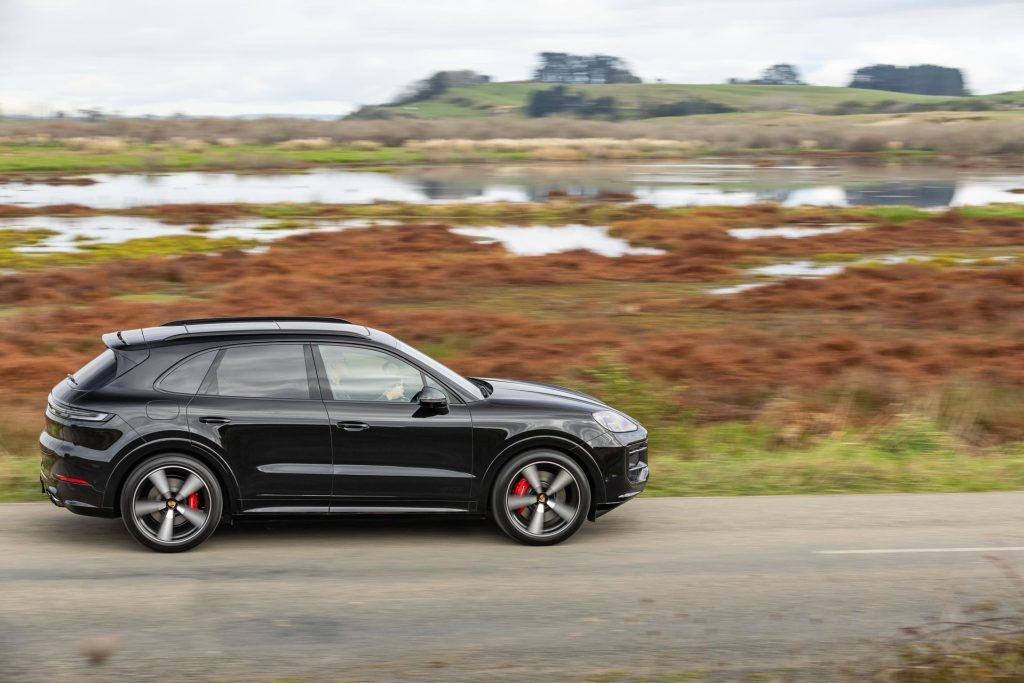
Who’d own a black vehicle? Well, pretty much anyone ordering the Cayenne GTS apparently. The people at Giltrap Porsche reckon it is far and away the most popular colour for this model; even the headlight internals are blackened.
We took it out into the countryside, as you do with any Porsche GTS because that’s what it was born to do. Even on relatively dry country roads it was soon covered in dirt and grime, picking up the detritus left in the tyre tracks of passing tractors and logging trucks.
We cleaned it twice on the day, and buffed it a further time. Yes, I know, it looks so ornery in black.
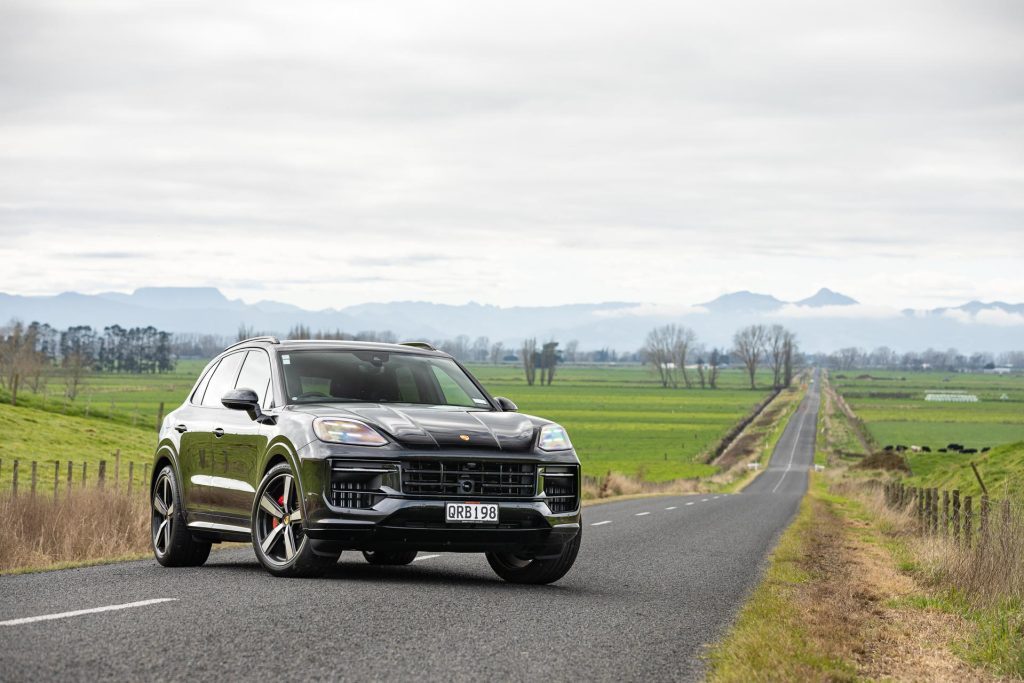
Drives like a howling wind
From the inside of course it matters not for this still drives like the wind. Not perhaps like a stormin’ norwester, which would be the 911 and Cayman versions, and other lower riding models from the brand.
But for a high riding and substantial vehicle, you’d not quite credit how this can shrink and make like something better grounded.
Our particular example had optional rear-wheel steering and that makes a big difference to how substantial vehicles like this carve their way through corners. It’s lowered a touch too versus other Cayennes, by 10mm.
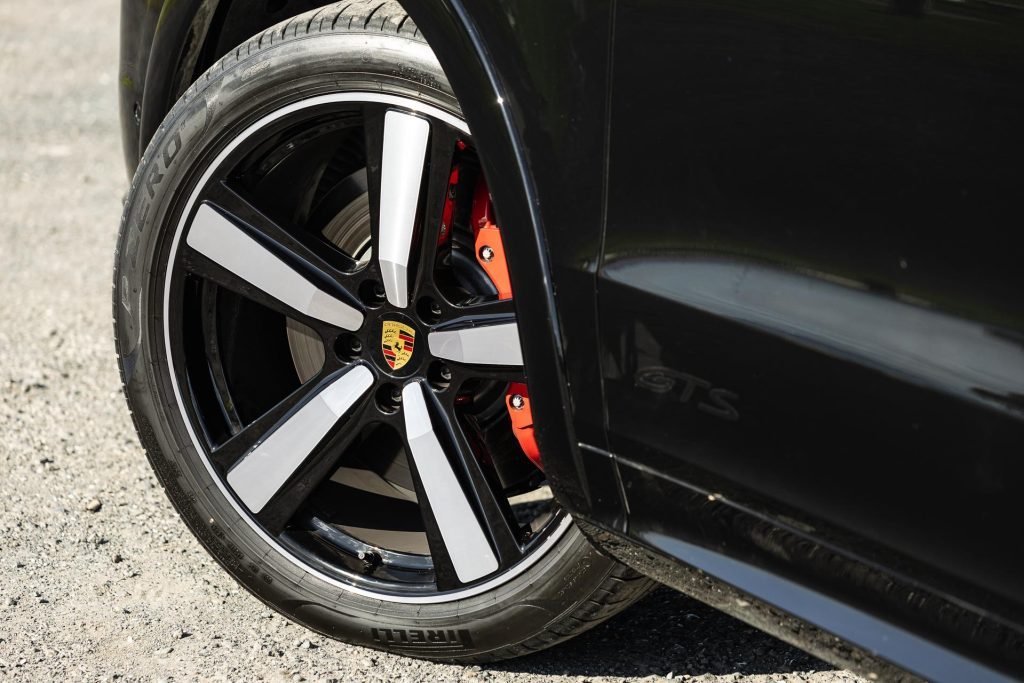
We took a sinuous route with which we’re fairly familiar and couldn’t believe how this dealt to the corners. Contributing to dynamics in no small way are the hoops at each corner, the fronts normally wearing 275/40R21s, the rears 325/40R21, all Pirelli PZero 060s.
Ours, however, was actually rolling on 22-inch rims, an extra $4920. Even so, the ride was only ever accommodating, well in Normal mode at any rate.
Perhaps that’s because the Cayenne GTS runs two-valve adaptive damper technology and two-chamber air suspension, the latest in sport suspension that’s both dynamic and accommodating at the same time.
It offers a quite astonishing mix of ride comfort and body control in the Normal mode, while Sport and Sport+ ramp up both the damping and the powertrain to even higher levels.
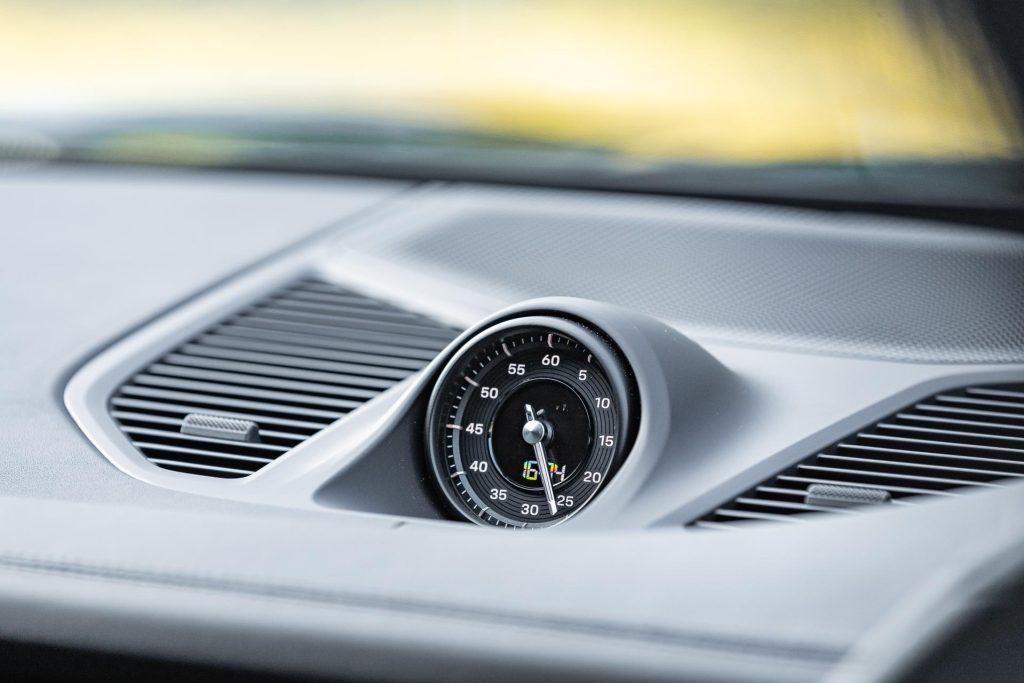
And the icing on this tasty cake is the torque vectoring rear diff. Not only do the rear wheels turn slightly in the direction you’re heading but the outer wheel helps to power the vehicle through the corner, oversteer a counter to the typical understeer you expect as you press on.
Perhaps the final factor that helps make this elevated machine think it’s Lightning McQueen is the front axle pivot bearings that this borrows from the Cayenne Turbo GT.
They slightly increase the negative camber of the leading wheels by 0.58 degrees, for better turn in. Every little bit helps.
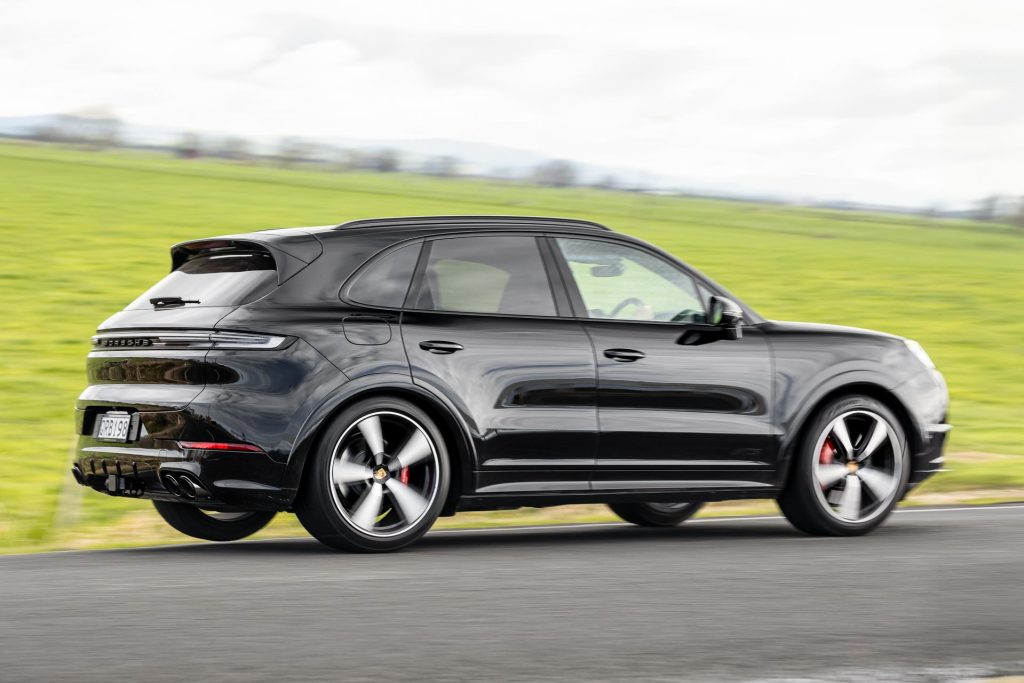
This elevated machine carved up our reference corners with just the merest hint of squeal. The rear wheels turning in the same direction as the fronts minimise tyre squeal at the grip limits.
We checked afterwards and noted that the drive mode was in the Normal setting! Likely, it would have made it through even quicker in the Sport modes.
Rear-wheel steering gets the very best out of the chassis and doesn’t have the occupants squealing in terror because there’s less in the way of cornering forces to throw them about.
It just works. And it only adds $3340 to the bottom line, nothing in the $249,900 scheme of things. Certainly less expensive than the 22-inch wheel upgrade.
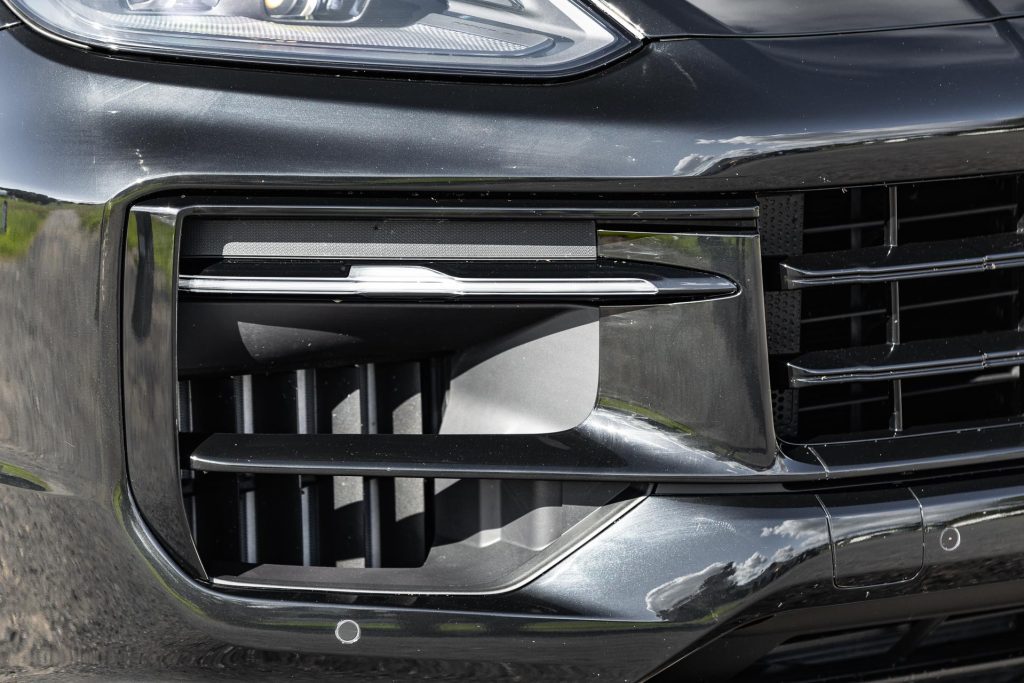
Long pedigree
Despite being an update, this still has a few traditional features that hint at its long history. It has been about since 2002; the third generation went on sale in 2017 while the facelift kicked off last year.
The reason the third generation has lasted this long is because electrification is coming to Cayenne. And by that we mean full electrification in 2025.
Porsche has recently pulled back on going fully electric across the board, as have many other car makers concerned about flagging EV sales.
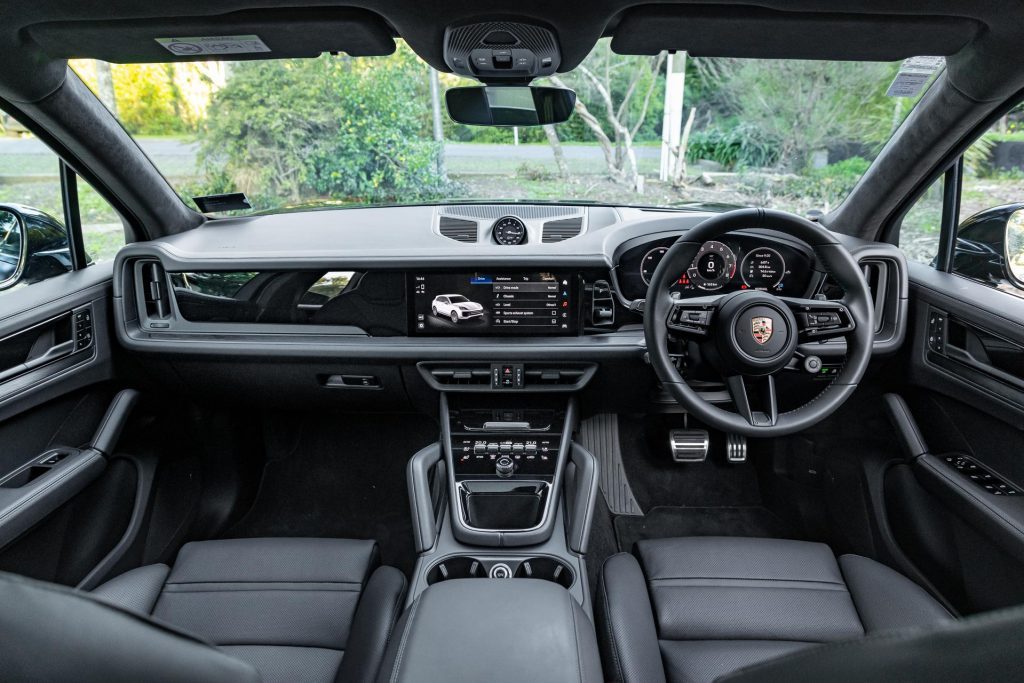
The German will continue to sell its third-generation SUV alongside the fourth-generation Cayenne that rides on a purpose-built electric chassis. So if you buy a Cayenne GTS now it’s not going to go extinct any time soon.
Moreover, Porsche believes there’s more than just one way of meeting its environmental goals; the company reckons there’s a place for e-fuels in its future that produce less in the way of tailpipe emissions. But they’re not a panacea by any means.
V8 sans electrification
Meantime, this here GTS is really rather traditional compared with, for example, the PHEV variant of the Cayenne, the E-Hybrid, we drove earlier in the year.
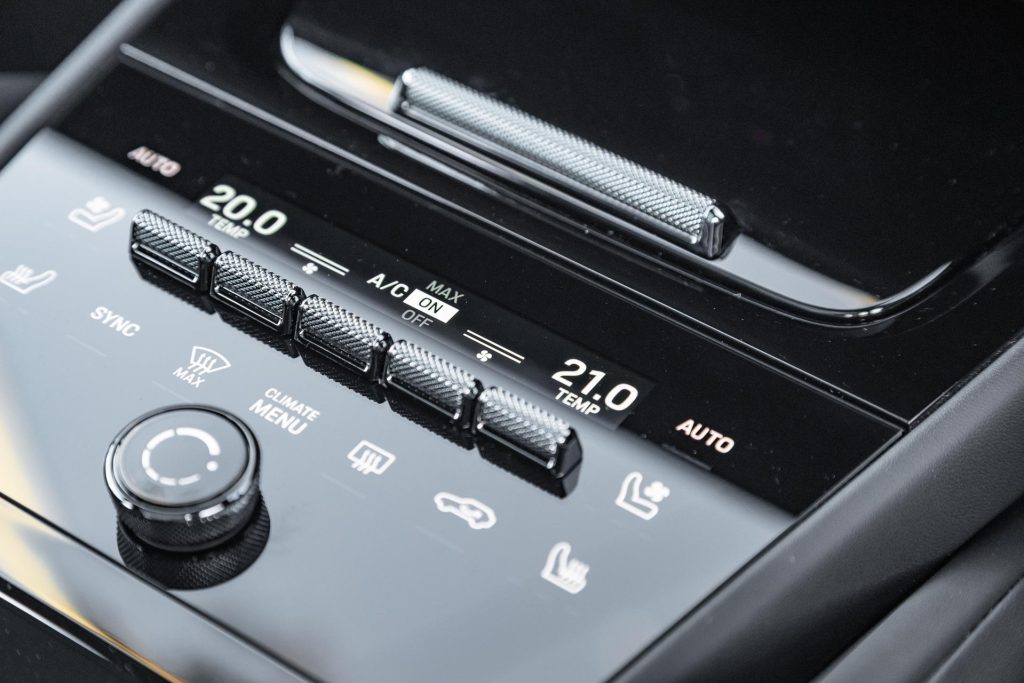
Where that can achieve a fuel use figure as low as 2L/100km, this not so much. We saw a best of 11L/100km, and a high in the 15s (combined claimed figure is 13.6L/100km).
That’s because it has no electrification of any sort. Motivating it is a tweaked version of its biturbo 4.0L V8. Amazing how used you get to twin-propulsion systems, and sprint times in the three-second bracket.
The latest GTS gets added oomph, better off by 30kW and 40Nm, outputting a stout 368kW and 660Nm, lots in anyone’s book. Not as much as the top Cayenne Turbo GT which offers a whopping 477kW and 800Nm.
It has a sprint time a second quicker but then it costs a sight more too, at $378k. You’d almost get a Porsche Macan for your SO with what you’d saved.
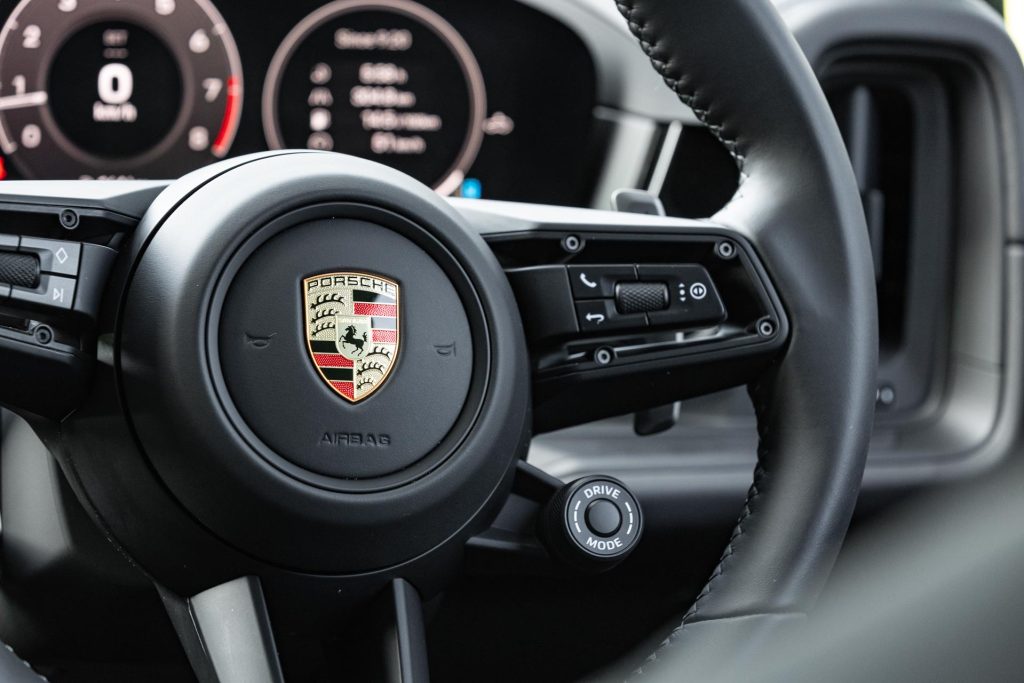
This is no lightweight with a kerb weight of just under 2.2 tonnes, though in modern terms that’s not bad; electric SUVs are heavier. With its slick-shifting eight-speed auto, it’s allegedly good for a 0-100 dash of 4.4sec, 0.1sec better than before.
Shorter shift times evidently contribute to that. Amazing how much extra it takes just to shave a tenth off when dealing with vehicles this substantial.
While Porsche engineers have managed to remove 15kg of weight from the GTS, they’ve installed the equivalent amount back in new spec, so it weighs much the same as before, at 2190kg.
We had no problem meeting its stated claim, and it produced this on its very first run (4.10sec), not to be bettered. We were more gobsmacked by its stopping power, the brilliant rubber (and the sheer amount of it) helping the GTS to a best 100-0 distance of 33.7m.
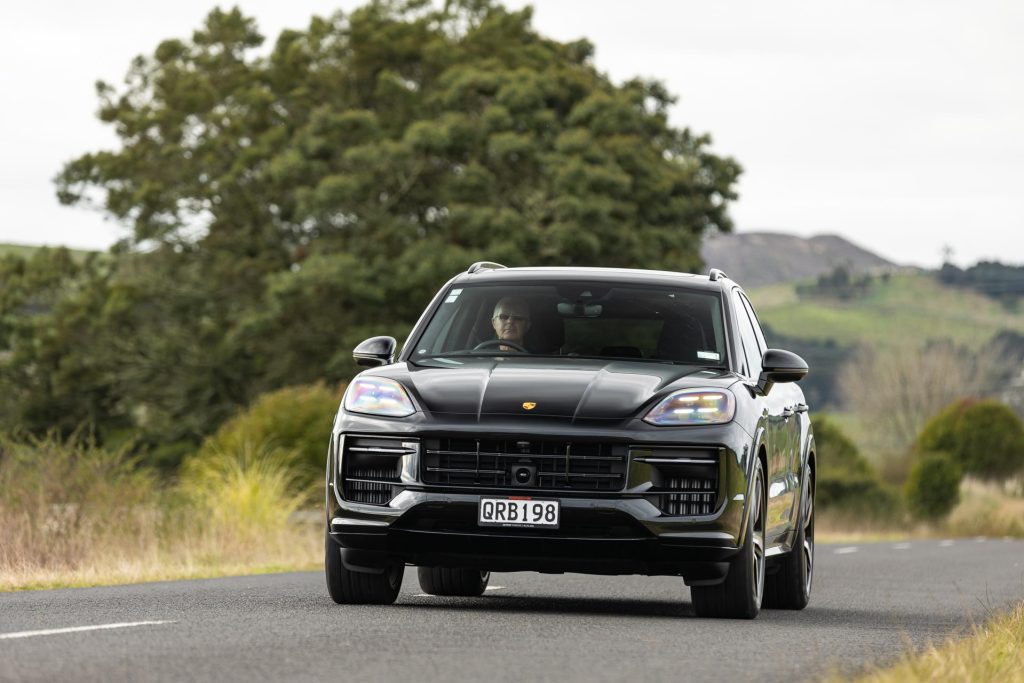
That’s right into performance car territory. Find a long enough straight on a closed road and this will evidently wind out to 275km/h. Holding it back is a Cd figure of 0.36.
Vehicles like Taycan have a Cd of 0.22 so can escape wind effects. Not that it’s any faster. On the contrary, with a top speed of 260km/h.
Electric sportsters accelerate like rockets with their abundant low down torque but things drop off at the top end, limited by gearing (having only two in the case of Taycan).
So easygoing
Anyhow, with the GTS it’s perhaps the ease with which it delivers its performance that is so telling. Even without any electrification it just feels effortless.
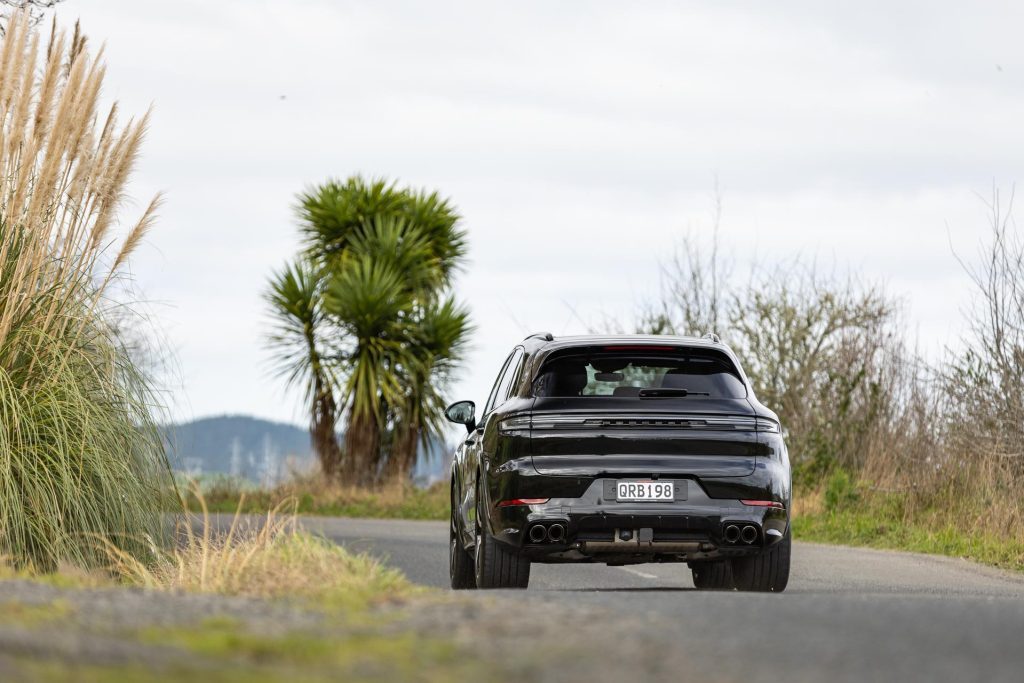
You can slope around town without exceeding 2000rpm and keep up easily with the traffic flow. Out of town that same 2000rpm in top gear would have doing 140km/h.
Little wonder this gets from place to place double quick, the hallmark of any GT worth its salt. Our photographer reckons there’s not much noise going on outside, even with the exhaust valves open.
But inside, you notice the burble (most of the time) and the blast (on occasions when you let rip). If this is all too underdone for you there’s a sports exhaust on offer as well. Your neighbours will love you for that.
It’s one of the easier modern vehicles to drive the GTS. The climate controls, for example, are on their own little control centre, with buttons you have to physically push that have a tactile feel about them.
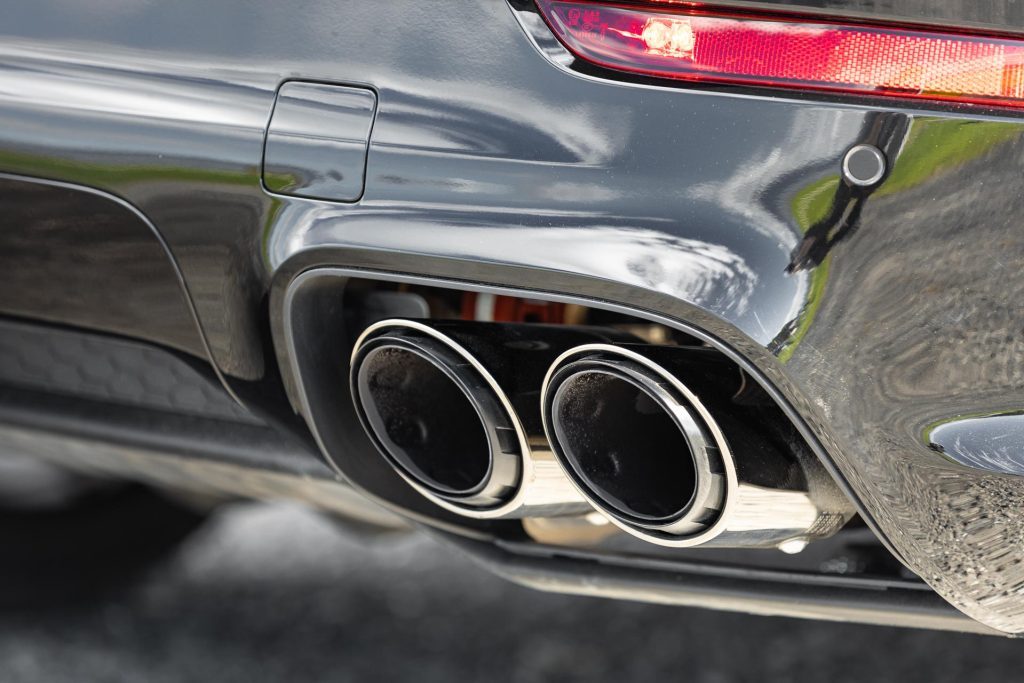
Nice, so turning on seat heating is a one stab proposition. Much of the rest of the information you might need is in the instrument cluster dead ahead.
Nice mix of spec
Standard features not already mentioned include a fixed panoramic roof, leather trim, powered and heated/vented front seats with lumbar, thoracic and thigh bolster adjustment, a towbar system with removable ball, and a heated sports steering wheel.
There’s also suede-like coverings for the roof lining, armrests and door panels, Bose surround sounds and 64-colour ambient lighting.
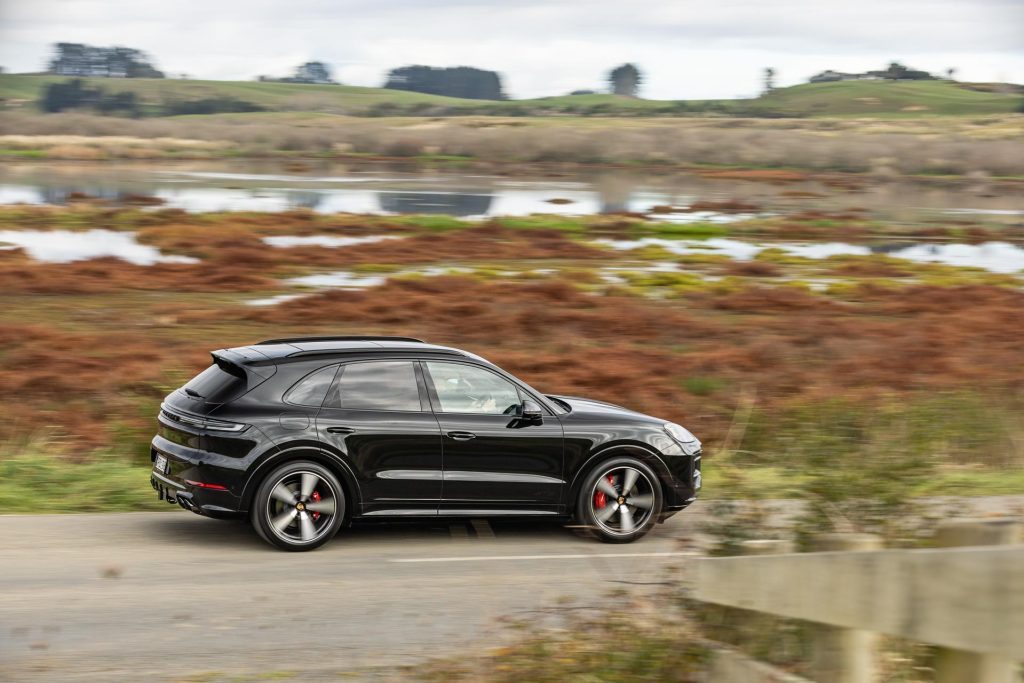
And the curved instrument display is highly configurable. But you’ll go with the central tacho and speed within. There’s also a traditional Porsche five-dial option.
There is also a Coupe version of this with an adaptive rear spoiler that kicks off from $252,400 if you’d prefer a racier shape that’s virtually as practical.
| Model | Porsche Cayenne GTS |
| Price | $249,900 |
| Engine | 3996cc / V8 / T / DI |
| Power | 368kW@6000rpm |
| Torque | 660Nm@2100-4500rpm |
| Drivetrain | 8-speed auto / AWD |
| Fuel Use | 13.7L/100km |
| C02 Output | 315g/km |
| 0-100km/h | 4.10sec |
| 80-120km/h | 2.91sec (82.22m) |
| 100-0km/h | 33.66m |
| Stability systems | ABS, ESP, TV |
| Safety | AEB, ACC, BSM, LDW, RCTA, ALK, AHB |
| Luggage Capacity | 1708L |
| Tow rating | 750kg (3500kg braked) |
| Fuel Capacity | 13.7L |
| Service intervals | 12 months/15,000 km |
| Warranty | 3 years/unlimited km |
| ANCAP rating | Not yet rated |
| Weight | 2190kg (claimed) |
This article first appeared in the September 2024 issue of NZ Autocar Magazine.


